Besides blogging about anime, I am a big gamer as I played video games since my childhood. In the past, I was a big Nintendo fan and I’m still am. However, when I started learning Japanese since 2011, I find that playing Japanese Games can be a good way to practice what you learn while discovering new vocabulary and Kanji. Of course, the Playstation Vita made that all possible when I got one on my birthday. Since I have played with it for almost five months, I want to share my experiences. (Image Source)
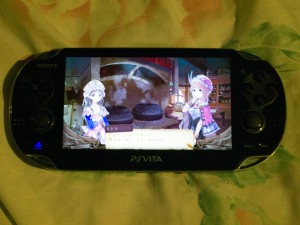
While I like the Nintendo 3DS, it started collecting dust as I played more games on the Vita. It’s because the Vita is a nice and powerful portable handheld that can even produce graphics close to the Playstation 3. In addition, it has a very nice OLED 4-inch touchscreen, which easily beats the Nintendo 3DS’s with a 3D enabled screen as this screen can produce crisp colors similar to the likes of Samsung’s Galaxy phones. Not only that, it have dual joysticks, which is the first for any handheld. The only downsides I have with the hardware is that the memory cards for the Vita is outrageously expensive ($59 for 16GBs) and the rear touchpad can easily get scratched.
One of the strengths that the Vita has is a lack of region locking. The region locking in Nintendo’s recent handhelds is one of the things that annoyed me a lot because you can’t import and play 3DS games released only in Japan (and there is a good number of games like that). I find this decision incredibly stupid since Japanese games cost about 2 times more than American releases. With the Vita, you can play games from any region and even use PSN accounts from different regions although you are limited to one account and have to buy credit from a third-party site like Play-Asia or Japan Codes. Because of this, you can import games that only have a Japanese release such as visual novels (Little Busters and Fate/stay night, the two popular visual novels I know from top of my head), 2 “Tale of” games that Namco refuses to localize and others. This is a good thing because I am looking for text heavy games to use for my Japanese self-study practice besides studying grammar rules and writing sentences. So far, I played with two Vita games extensively (Little Busters Converted Edition and Atelier Totori Plus):
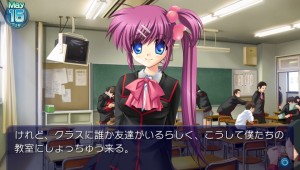
Little Busters Converted Edition: This is basically the Little Busters visual novel, but on a portable system. I just find it more convenient to play it on a portable system since I can read the visual novel anywhere and look up words on the fly. I know there is a translated version, but that is cheating considering that mastering the Japanese language is one of my priorities.
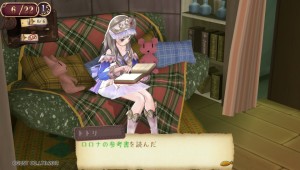
Atelier Totori Plus: This is basically a port of the PS3 game with the DLC content already included. Believe it or not, like Atelier Meruru, which I wrote about in a recent post, this game is addictive. Compared with the PS3 games, the graphics look gorgeous. Like the PS3 game, this game involves a young female alchemist named Totooria Helmold who wants to become an adventurer to find her lost mother.
While I also have LittleBigPlanet and Persona 4 Golden, I was slightly disappointed with the former as Sony is doing the online pass crap again to screw over gamers. As for Persona 4, I heard it’s one of the best Japanese RPGs you can get currently on the Vita that is localized. Aside from that, I preordered Tales of Hearts R, which comes out in March. I wonder how the gameplay will be like since Namco likes to keep most of its games Japan only.
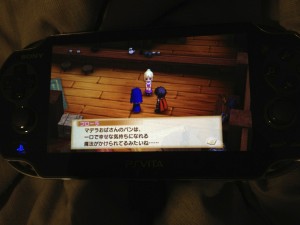
As for Playstation Portable games, if they are bought from the Playstation Store, you can play with them on the Vita. From experience, they play rather smoothly on the new system. However, Japanese text can be difficult to read at times, especially the more complicated kanji since they look blurry, which makes it hard to look up. This is due to the upscaling for PSP games. Not only that, you cannot take any screenshots while playing non-Vita games, which is a bummer since there are times I want to take screenshots of PSP gameplay for reviews such as my Idolmaster Shiny Festa review.
Overall, I like the Playstation Vita a lot although some might find it expensive (although it can use a slight price cut) and bash it for it’s low sales. Nowadays, I use my portable consoles a lot more than my home consoles as I go out quite a lot. From a person who is studying Japanese language, the Vita is more attractive as you don’t have to get a Japanese console just to play Japanese games unlike the 3DS. Even so, I still love both systems and take them over crappy mobile games any day. I just think Vita has a slight edge in my opinion for its capabilities even though there is a lot of potential that remains untapped.

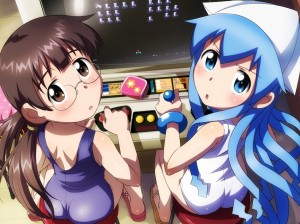

The region lock deal is the only thing that I hate about my 3DS XL, but I can still play my old Japanese DS games. Well…the ones that are left anyway. I play games to test my understand mainly, but as far as learning goes, I still prefer the old student to teacher method. I am finding out now, especially when it comes to some of the more advance kanji radicals that my self-study (excluding video games) is causing me to miss a few key points that would make the process a whole lot less taxing. However, if works for you, go for it. Definitely an admirable way and something you can enjoy. Post is reminding me to dust off my old psp to finish up the last route of Queen’s Gate: Spiral Chaos
Of course people will have different learning styles and may need teaching instruction. The problem is that instruction doesn’t go really far since they go slower and most times, teach up to a level of a kindergarten level. I was able to go though the elementary course in almost a whole year and try to practice every day such as going through flash cards and reviewing. I roughly go through each lesson a week, so I’m going at a faster pace.
As for Kanji, knowing radicals is a must, but there are other ways to look them up depending on what dictionary app you use. Even so, I think Chinese is more difficult because iat time, traditional characters are more complex and the language uses a lot of these logograms. Still, I’m still having some enjoyment in learning it compared to Latin, which I took in High School and find it pretty uselsss.
It is a two-way street, depending both on student and teacher. More so the teacher. If the teacher doesn’t have enough experience or doesn’t frame the lesson plan with the student in mind (or student doesn’t speak up if they don’t understand), indeed, course instruction will go slow. I think you can say that about teaching in general, but speaking personally and not for everyone else, I think I have been learning more from my instructor, since she can point out my mistakes, engage in verbal communication (which is something you have to do if you plan to speak it), and it is more interactive rather than a lecture or memorizing. Of course, the help is no good if you don’t practice on your own. However, the instruction and rate of speed of teaching for our class just depends…but since this is module III we are done with the basics.
My girlfriend (who practically knows the language) has been helping me with a majority of the radicals, since I haven’t found a real reliable dictionary or tried any of the flashcard material. I heard of stuff like Anki, but never attempted it, since I haven’t had to use it yet. Guess it is time that I do. Well, if you are learning the language because you are interested – enjoyment usually factors itself in. That and how much you will be using it. For myself, I have learned French, Latin, and some Arabic, but probably will not be using any of those in my field…especially Arabic. Mainly learned those because I was interested with the history that went along with it and always good to know a secondary language. Latin has come in handy some of the time, especially when professors are asking the class what certain principles refer to like in my marketing and law classes. Reasons for learning Japanese are abit more selfish, but probably might be useful other than for the novel aspect.
For classes, it’s more helpful with the verbal stuff as I have never touched upon it. While I can understand sometimes what they are saying, I won’t have much experience. But I do have a solution of pointing out mistakes as Lang-8 allows you to have stuff you written and then corrected by native speakers. It’s helpful, but it seems that the mistakes I’m making is more to due with lack of vocabuary pool and also sometimes, the pesky は vs が issues. Otherwise, I can get a grasp of the grammar once I practice it a bit and look through it every day.
As a whole, learning a new language allows a person to be open minded as you learn bits of culture while learning the language. While Chinese would be more useful now, I didn’t get to learn it even though my dad knows it since he came from China before moving to America and my mother, who was born here. Maybe I wasn’t motivated to attend Chinese school during my childhood, but if I knew it, probably knowing the Chinese Characters would be a bit easier despite not being exactly the same (Japanese has a good number of simplified characters that are different compared to Traditional Chinese Characters.). Oh well, but I hope to get something out of it once I become good at it… not sure about speaking as I probably won’t get good unless I live in Japan for a few years or manage to talk to some native speakers to practice over Skype or something.
So are you using these games to practice reading Japanese then? That’s pretty neat–I can see that being helpful if you have at least a basic grasp of the kanji, which I’m still nowhere near at. I’ve tried translating children’s light novels in Japanese, but it’s an incredibly slow process for me still–I really need to have a decent vocabulary first, both with Japanese words and with the kanji. x_x
I’ve wanted a PSP for a good while now–mainly for Corpse Party, but I’m interested in Hakuouki and Persona 3 as well. But if Vita can play those as well as all the new stuff coming out, it may make more sense to get that instead. (There will probably be a price cut by the time I have spending money for something that big, I imagine.) It’s really nice that these systems aren’t region-locked.
Vocabulary is a problem for me too, but flash cards are useful in memorizing them. As for Kanji, I haven’t really focus on them although I know about 100+ which is hardly enough. Been focusing primarily on grammar and vocabulary. Still, it’s slow to translate as it usually takes 3-5 mins to translate a few short sentences.
Vita does not have a UMD drive, so it’s better off to keep a PSP unless you don’t have the games already and have a big memory card. Still, it’s a godsend that the PS3, PSP and Vita aren’t region locked since there are lots of Japanese games that don’t get a localization. The DS was also a good choice as it was region free before the DSi and 3DS came along and changed everything. Still, reading any Japanese material is good since you see how native speakers use the language.
Personally I enjoy your idea of learning Japanese through playing PlayStation, but I have always hope there are Enlish translation on the side, when if I don’t get the meaning.
Hello Chikorita, interesting blog you run, I’m happy to see you still update & I will be following from here on. I came across your blog while deciding which to purchase. I’ve decided I need both for different uses, mainly visual novels on the Vita. I was curious if you might be interested in naming your favorite games from both the 3DS & PS Vita.
I reviewed several on my blog, but I played a good number and reviewed good number of Atelier games, some Neptune games and the Tales of Hearts R game on the vita. Note that some of these games are on the Switch and PC and you might be better off playing them on the Switch or PC (or on the PC gaming handheld like a Ayaneo or GPD Win 4 or a Steam Deck).